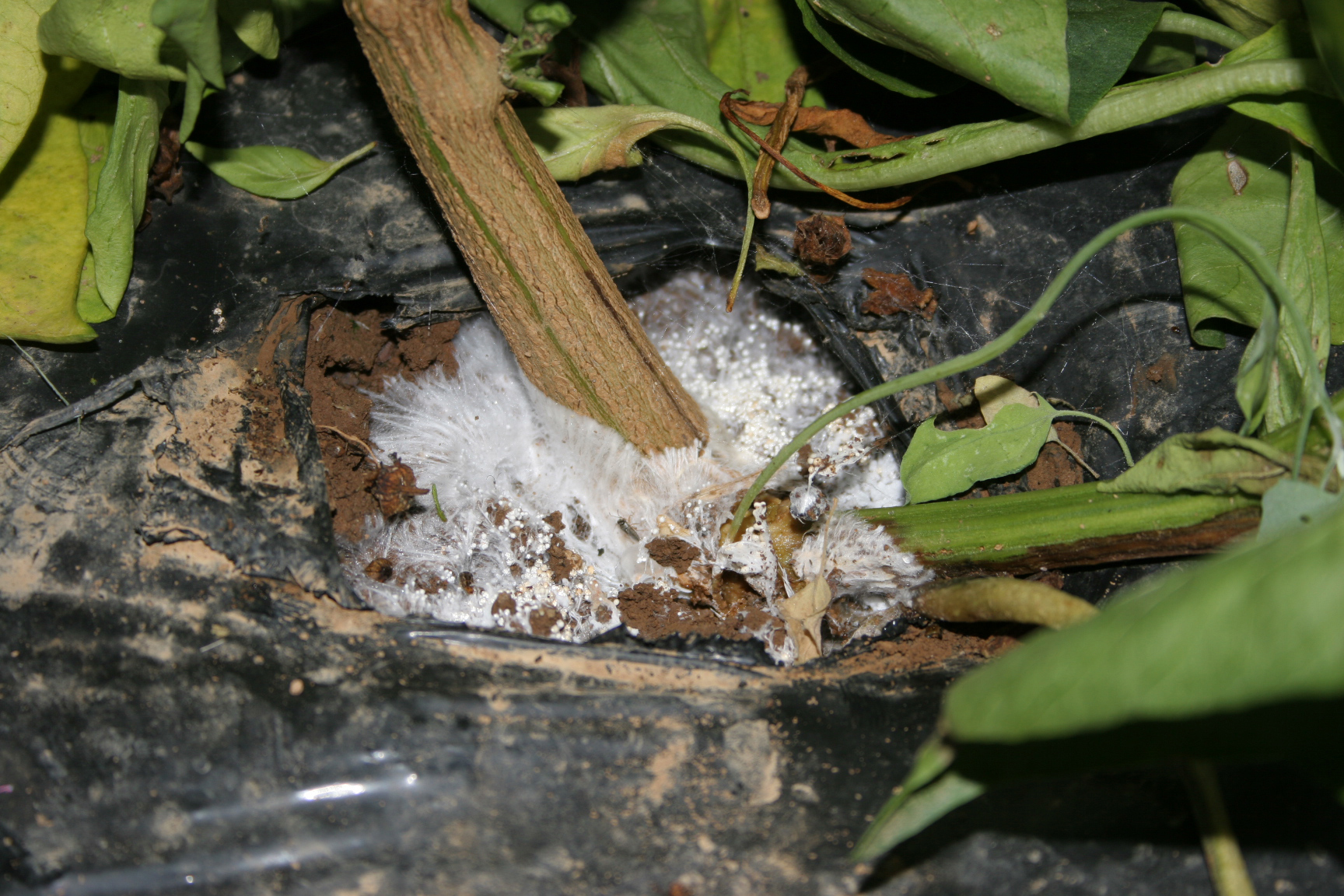Southern Blight
Return to Diseases
Southern blight (Sclerotium rolfsii) typically causes lesions at or near the soil line, with white, fanlike fungal growth (mycelium) often evident on plant stems and expanding into surrounding soil. Numerous spherical fungal resting structures (sclerotia) roughly the size of mustard seeds can be found on the surface of the mycelia. Sclerotia initially appear white, but become tan or reddish brown as they mature. This pathogen overwinters in soil as sclerotia and can infect numerous different vegetable and ornamental crops.
Southern stem blight sclerotia and mycelia on tomato stem.
(Photo: Kenneth Seebold, University of Kentucky)

Southern blight on soil around infected pepper plant.
(Photo: Kenneth Seebold, University of Kentucky)
Management:
- Fungicides may only be suppressive.
- Rotate to non-host crops.
- Deep tillage to bury sclerotia may hasten their decay.
- Consider fumigation or solarization.
